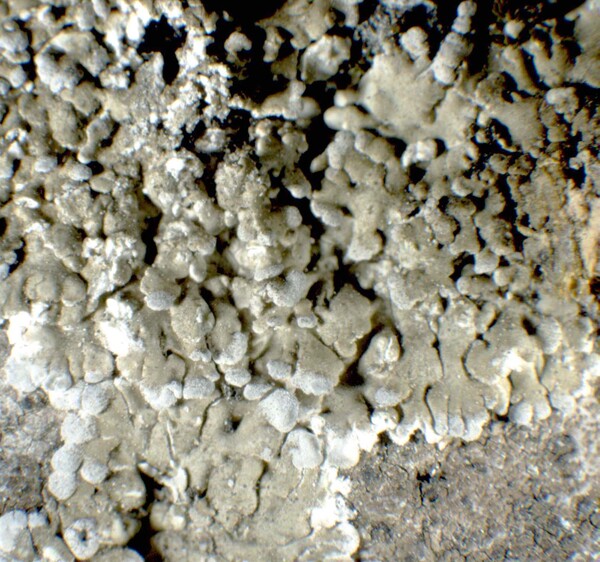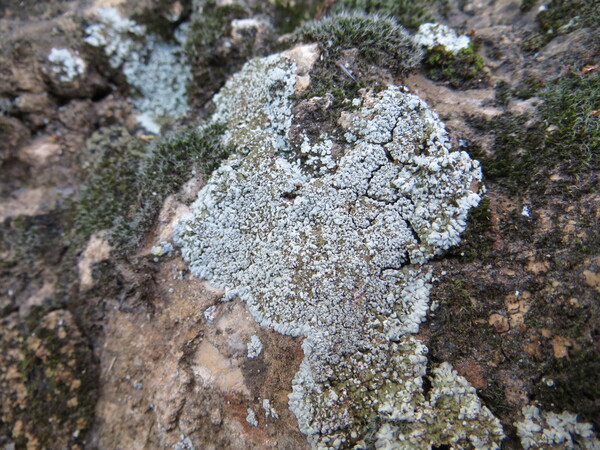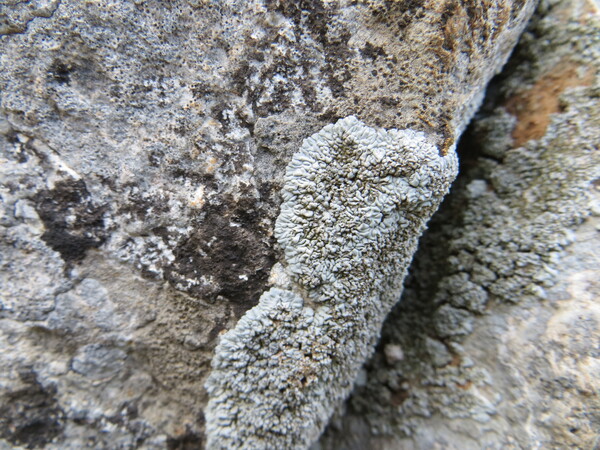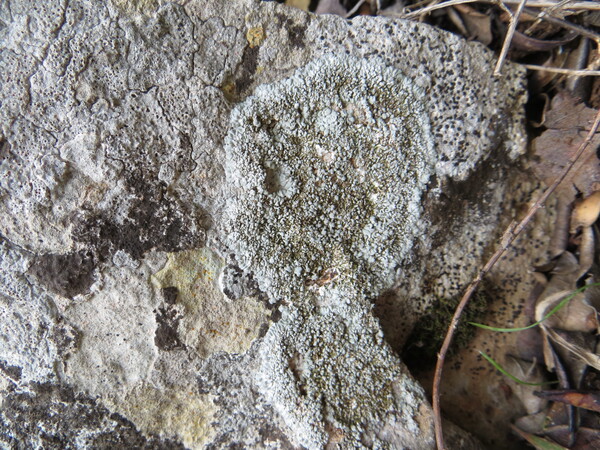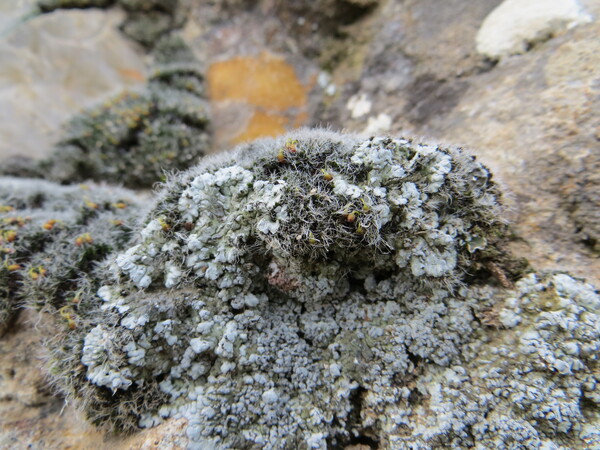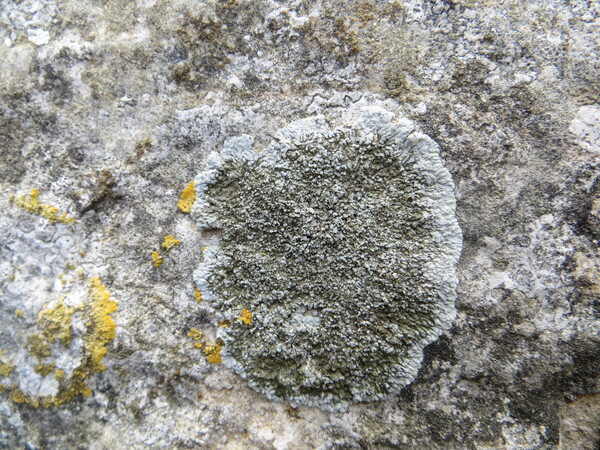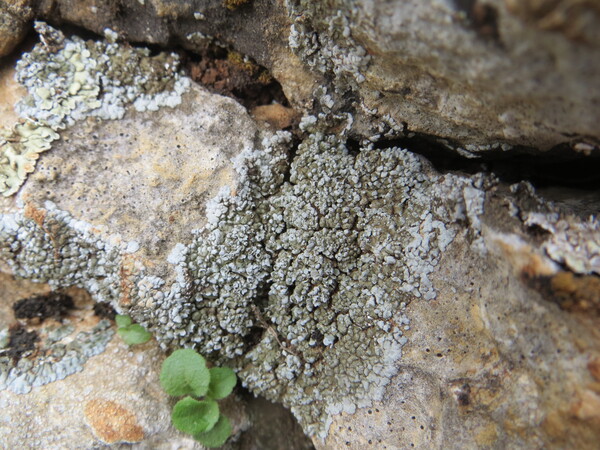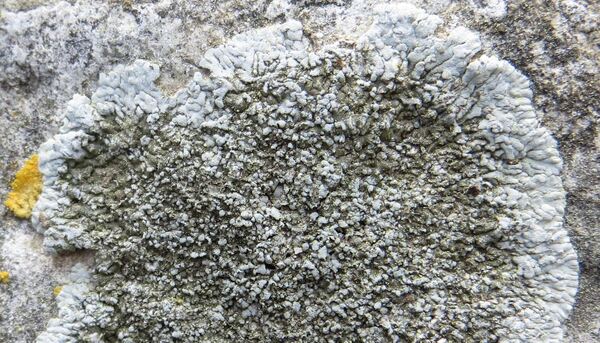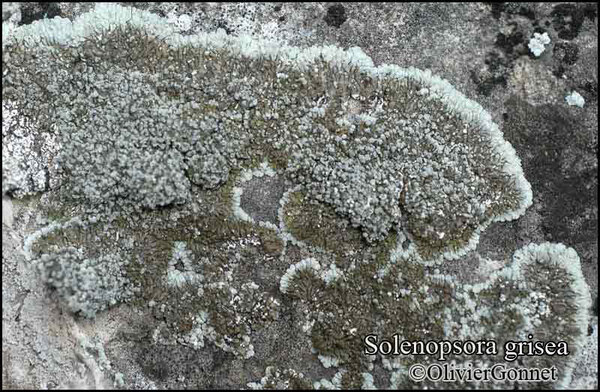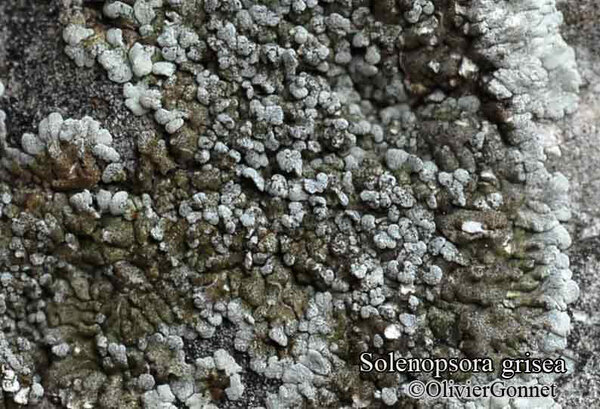Solenopsora grisea (Bagl.) Kotlov
Nov. Sist. Niz. Rast., 37: 251, 2004. Basionym: Ricasolia cesatii var. grisea Bagl. - Comm. Soc. Critt. Ital., 1, 3: 121, 1862.
Synonyms: Solenopsora bagliettoana Tav. ined.
Distribution: N - VG (Guttová & al. 2019), Ven (Guttová & al. 2012), Lomb (Guttová & al. 2012). Emil (Fariselli & al. 2020), Lig (Guttová & al. 2014, 2019). C - Tosc (Guttová & al. 2014, 2019, Darmostuk & al. 2022), Marc (Nimis & Tretiach 1999, Guttová & al. 2019), Abr (Guttová & al. 2019), Laz (Nimis & Tretiach 2004, Guttová & al. 2019), Sar (Guttová & al. 2019). S - Camp (Nimis & Tretiach 2004, Guttová & al. 2019), Pugl (Nimis & Tretiach 1999, Guttová & al. 2019), Cal (Puntillo 1996, Guttová & al. 2019), Si (Nimis & al. 1994, Guttová & al. 2019, Darmostuk & al. 2022).
Description: Thallus crustose-placodioid, episubstratic, forming continuous, irregular, up to 8-10 cm wide patches, the central parts glaucous grey-green, the marginal lobes up to 1 mm wide, white-pruinose at margins. Central part of thallus with raised lobules producing blastidia or breaking into soralia-like structures. Apothecia infrequent, lecanorine, up to 1.5 mm across, with an initially flat, then strongly convex, brown, pruinose or epruinose disc, and crenulate, then often excluded thalline margin. Epithecium brownish; hymenium colourless, 60-70 µm high, K/I+ blue; paraphyses simple, coherent; hypothecium colourless, 80-100 µm high. Asci 8-spored, cylindrical-clavate, with a K/I+ blue outer coat and a K/I+ uniformly blue apical dome, approaching the Catillaria-type. Ascospores (0-)1-septate, hyaline, narrowly ellipsoid, (10-)14-18 x 2.5-4 µm. Photobiont chlorococcoid. Spot tests: cortex and medulla C-, K-, KC-, P-. Chemistry: medulla with terpenoids and unidentified substances, rarely with atranorin.Note: on calcareous rocks in open to sheltered situations; for further details see Guttová & al. (2014).
Growth form: Crustose placodiomorph
Substrata: rocks
Photobiont: green algae other than Trentepohlia
Reproductive strategy: mainly asexual, by soredia, or soredia-like structures (e.g. blastidia)
Most common in areas with a humid-warm climate (e.g. most of Tyrrenian Italy)
Commonnes-rarity: (info)
Alpine belt: absent
Subalpine belt: absent
Oromediterranean belt: absent
Montane belt: absent
Submediterranean belt: very rare
Padanian area: absent
Humid submediterranean belt: rather rare
Humid mediterranean belt: rather common
Dry mediterranean belt: extremely rare
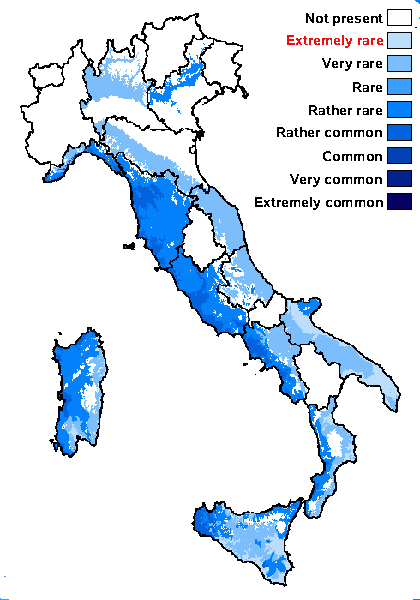
Predictive model
Herbarium samples
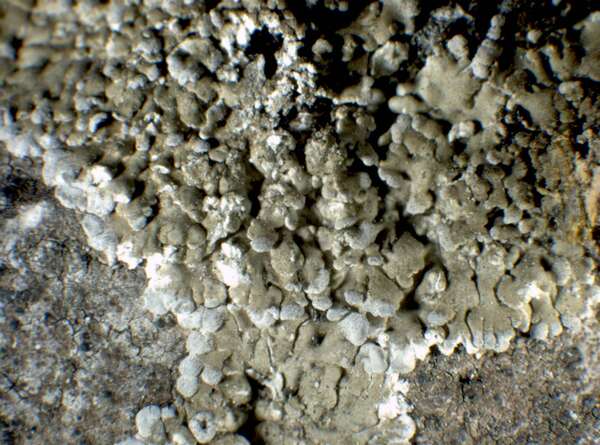

P.L. Nimis; Owner: Department of Life Sciences, University of Trieste
Herbarium: TSB (30712)
2001/12/18
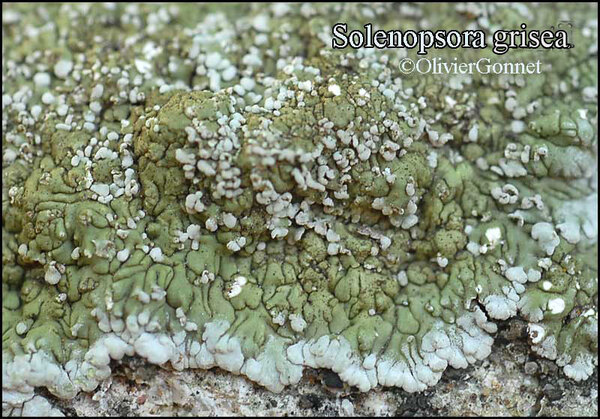
Courtesy Danièle et Olivier Gonnet - Source: https://www.afl-lichenologie.fr/Photos_AFL/Photos_AFL_S/Text_S2/Solenopsora_grisea.htm
France, session AFL Lubéron 2009 - Vaucluse
Growth form: Crustose placodiomorph
Substrata: rocks
Photobiont: green algae other than Trentepohlia
Reproductive strategy: mainly asexual, by soredia, or soredia-like structures (e.g. blastidia)
Most common in areas with a humid-warm climate (e.g. most of Tyrrenian Italy)
Commonnes-rarity: (info)
Alpine belt: absent
Subalpine belt: absent
Oromediterranean belt: absent
Montane belt: absent
Submediterranean belt: very rare
Padanian area: absent
Humid submediterranean belt: rather rare
Humid mediterranean belt: rather common
Dry mediterranean belt: extremely rare

Predictive model
| Herbarium samples |


P.L. Nimis; Owner: Department of Life Sciences, University of Trieste
Herbarium: TSB (30712)
2001/12/18

 Index Fungorum
Index Fungorum
 GBIF
GBIF
